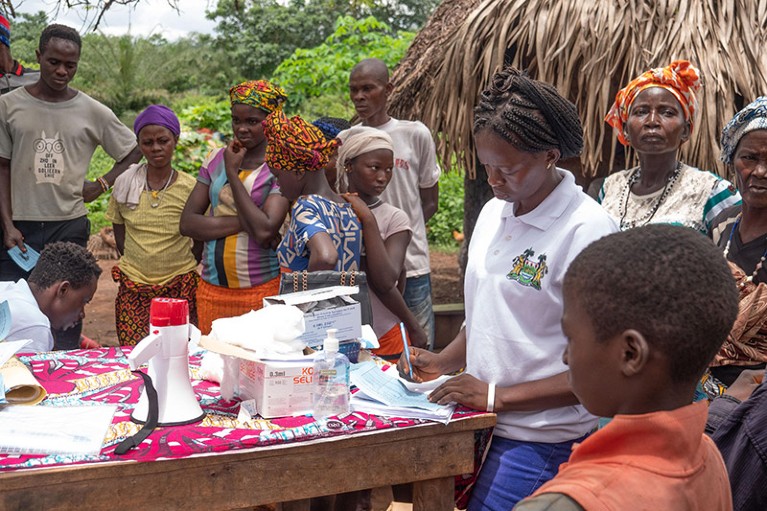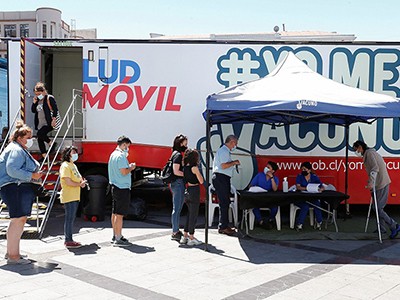
A vaccination clinic in Kafugumbah village, northwest Sierra Leone.Credit: Conor O’Donovan/Concern Worldwide
Deploying mobile COVID-19 vaccination clinics in rural areas of Sierra Leone increased vaccination rates sharply, according to an ambitious experiment involving 150 villages1. The effort is an outlier: many more studies examine vaccine hesitancy and misinformation than focus on vaccine access.
“The investigators made a great effort to bring vaccines to remote communities,” says Jean Nachega, an infectious-disease epidemiologist at the University of Pittsburgh in Pennsylvania, who has highlighted challenges in COVID-19 vaccine access in Africa2. The model could be transferred easily to other countries, he adds, calling the campaign “very laudable”.
The results, published on 13 March in Nature, highlight the importance of delivering vaccines, as well as other essential medical treatments and supplies, to rural, less affluent areas, says study co-author Ahmed Mushfiq Mobarak, an economist at Yale University in New Haven, Connecticut.
Vaccine disparity
Table of Contents
By November 2023, more than 80% of people in high-income countries had received at least one dose of a COVID-19 vaccine, compared with rouhgly one-third of the population of Africa.

COVID-19: talk of ‘vaccine hesitancy’ lets governments off the hook
In addition to vaccine supply issues, another possible reason for this disparity is that nearly 60% of people in sub-Saharan Africa live in rural areas, where medical care can be inaccessible. For example, when COVID-19 vaccines first became available, people in rural Sierra Leone, in western Africa, needed to make, on average, a seven-hour round trip to receive the jab, at a total cost that could exceed a week’s wages, Mobarak says.
To address this problem, Mobarak and his colleagues designed a system to make vaccines accessible to these rural communities. They selected 150 villages in Sierra Leone and randomly assigned 100 of them to host a two- or three-day vaccination clinic; the remaining 50 served as a control group. By the end of the clinics, 30% of people in the communities that had hosted one had been vaccinated against COVID-19, compared with about 6% of people in control villages.
Last-mile delivery
The researchers found that the clinics’ success varied by region; after the clinics were held, the vaccination rate was at least 65% in some communities and as low as 0% in others. Mobarak says that future research will need to identify the source of this variation, and the extent to which vaccine hesitancy might have played a part.
Hesitancy is important to understand, but it shouldn’t preclude vaccination campaigns or more research on vaccine supply and access, Mobarak says. “When you’re starting with a baseline vaccination rate of essentially zero, our research shows that the most cost-effective thing to do is just to show up,” he says.
The clinics cost about US$33 per person vaccinated. The researchers now plan to test the same strategy in other countries, and to deliver routine childhood vaccines and medical supplies, such as oral rehydration packets, that would further reduce costs per person treated.
